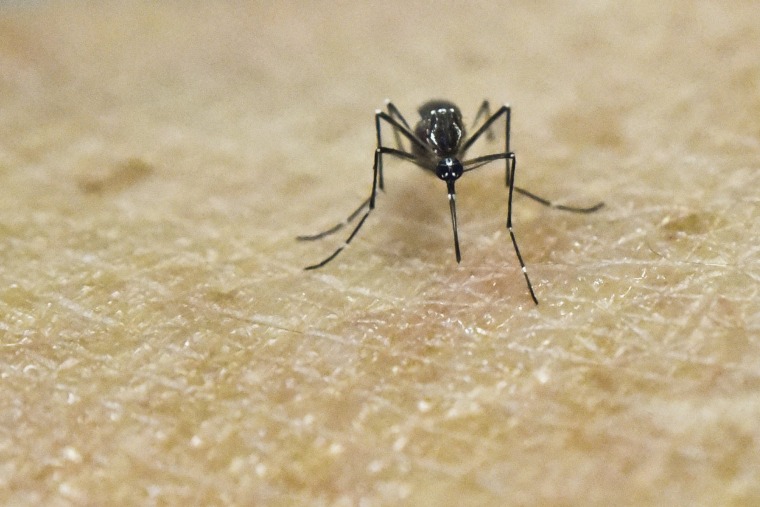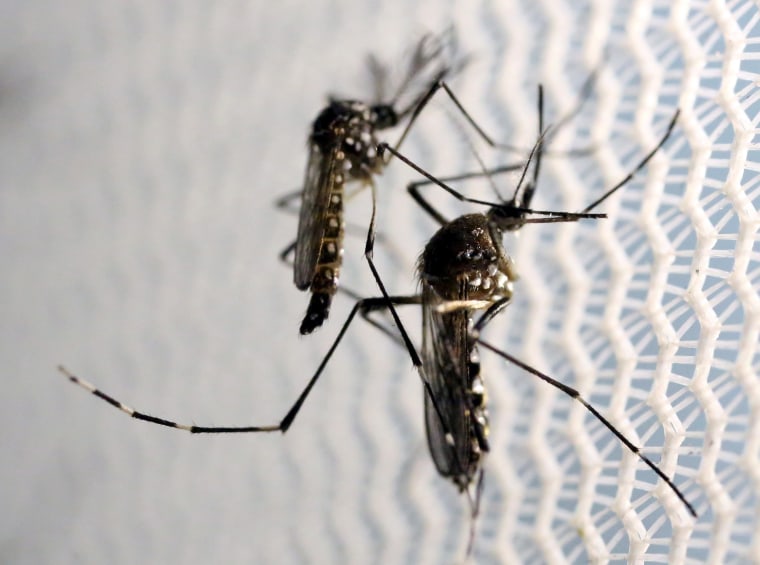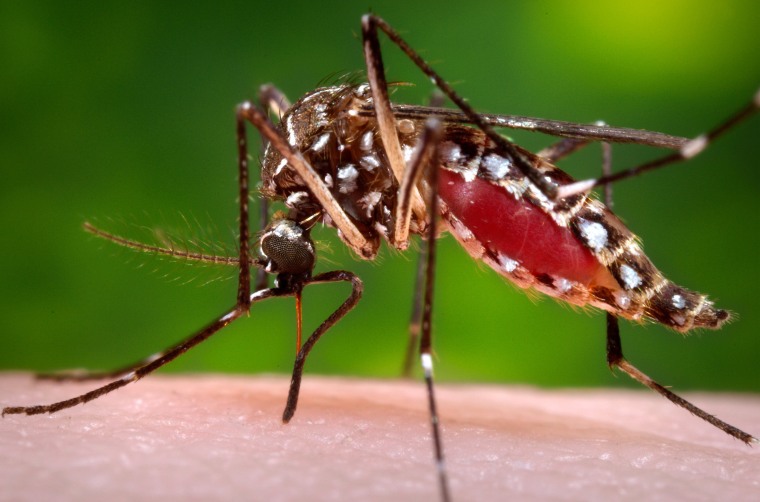Mosquitoes are humanity’s deadliest pest. Their bites spread painful diseases that sicken and kill tens of millions of people, making them the target of advanced schemes to limit their impact.
But new research suggests some mosquitoes could prove especially difficult to eradicate, and that the diseases they spread could get even worse as more people move from rural environments into cities.
The latest research, released in the journal Molecular Ecology, focused on the Aedes aegypti mosquitoes from around the world, including Madagascar and other islands in the Indian Ocean. They're most easily identified by the white stripes on their legs.
Although most of the roughly 3,500 mosquito species don’t feed on human blood, the Aedes aegypti is one of the worst. Its bite infects millions of people – especially young children – with yellow fever, dengue and Zika, causing tens of thousands of deaths each year.
By comparing their genes, the researchers determined that the Aedes aegypti mosquitoes probably evolved from an ancestral species on islands in the southwest Indian Ocean about 7 million years ago.
And the research indicates the mosquitoes spread from the islands to the African mainland quite recently in evolutionary time, possibly within the last 25,000 to 17,000 years, lead author John Soghigian, an evolutionary biologist at North Carolina State University, said.

Soghigian carried out the study with other members of a research group at Yale University and scientists in France. He said the Aedes aegypti was traditionally seen as a forest species that had adapted to human settlements, but the new research suggested it first adapted to survive the varied environmental conditions of the islands.
“This is a mosquito that may have already been highly adaptable to diverse habitats when it reached Africa, and so that could explain why [it] became such an important vector and pest to humans,” he said.
The research by Soghigian and his colleagues comes just a few weeks after another study of the Aedes aegypti mosquitoes published in the journal Cell Biology.
Most populations of Aedes aegypti prefer the blood of animals such as rodents and monkeys to human blood. But the researchers found urban mosquitoes in sub-Saharan Africa were more drawn to the smell of a human forearm than to a guinea pig, compared to mosquitoes from rural areas.
The study also found that mosquitoes from the dry Sahel region of Africa – the semi-arid zone between the Sahara desert and wetter regions further south – consistently preferred biting humans.
That suggested they evolved to feed on human blood after they were exposed to drier conditions than they were used to, Carolyn McBride, an evolutionary biologist at Princeton University and the lead author of the study, said.
Those two factors indicated the Aedes aegypti had evolved in densely populated areas in a dry region like the Sahel to bite humans – and so some mosquito-borne diseases could increase if the climate became drier and as more people moved to live in cities, she said.

The study could help in monitoring mosquito populations and lead to better ways to limit their impact.
“We need to understand what mosquitoes are doing in various places in Africa, in order to design good control strategies,” McBride said.
Soghigian’s research indicates the Aedes aegypti mosquitoes will be difficult to eradicate. “It is highly adaptable and it is transported across great distances by humans, which would allow it to recolonize regions it is removed from rapidly,” he said in an email.
His team had also detected that different populations of the Aedes aegypti in Africa and the Indian Ocean shared some genes, possibly from interbreeding, which suggested they could evolve into new types that might be even worse than before.
“This could have important public health implications for the region,” he said. “Could this gene flow lead to deadlier mosquitoes in the region?”
The latest research is “fascinating stuff,” said Timothy Winegard, a historian at Colorado Mesa University and the author of “The Mosquito: A Human History of Our Deadliest Predator.”
Its timeline for the evolution of the Aedes aegypti did not conflict with the idea that it spread to the Americas about 500 years ago as “stowaways” onboard slave ships from Africa, he said.
The ability of the Aedes aegypti mosquitoes to feed on human hosts and breed in human-made containers – such as pools of water in discarded tires – had allowed them to thrive in many parts of the world, entomologist and ecologist Lauren Cator of Imperial College London said.
“This … enhances the likelihood that a mosquito gets infected with a virus of concern, and the likelihood that they will bite a human to pass it on,” she said in an email.
